- Home
- James Rollins
Bloodline: A Sigma Force Novel Page 38
Bloodline: A Sigma Force Novel Read online
Page 38
Beyond the workbench, deeper in the lab, larger creatures, the size of small black bears, had lurked, in various stages of assembly.
Kat strode across the meadow, hefting the shield to test its weight and swinging the pipe to judge its balance.
We’ve pitted the hexapods against unarmed opponents in the past, Fielding had finished. Today we’ll test them against the next level of weaponry: blunt weapons and shields. We will send wave after wave, escalating the numbers each time, until they learn, adapt, and defeat their opponent.
A rustle to her left alerted her. She swung around, dropping her shield low. The grasses stirred as something raced low through them, cutting across the meadow like the fin of a shark through water. She saw four other trails swinging wider, intending to outflank and circle her.
Clearly, they were capable of coordination.
Good to know.
Fast as greyhounds, the hexapods churned through the fields. She’d never make the tree line, so she didn’t bother trying. She would make her stand here, using this first wave—if she survived it—to learn and adapt.
Nothing said she couldn’t evolve as readily as her opponents.
First, she didn’t want to be in deep grass. She wanted a better field of view. With seconds to spare, she used her shield as a press and stamped a swath of grass around her, pushing the stalks outward, creating a thicker natural palisade. She left one section open, a gate into her little nest.
The first hexapod hit that palisade broadside, got wedged in the wall of compacted grasses. She identified the gleam of its titanium carapace and speared her pipe down at it, using all of her weight. Metal crunched under the battering ram. It didn’t kill the beast, but it incapacitated its sensory system, sending the pod zipping away in a spiraling blind curve.
The other four, perhaps wirelessly sharing the experience of the first, veered away from a direct attack. They swarmed in a circle. Then one cut away, shooting toward the opening, sensing the chink in her shield—not knowing it was a trap.
It cut into her nest, but she was ready. She used her pipe like a golf club and batted it square in the front sensors, crushing the electronics and sending it flying. It landed on its back and didn’t move.
A weak spot.
The other three circled, clearly plotting something, then, once decided, the trio arrowed toward the opening together, plainly trying to overwhelm her.
Sorry, we’re closed for the day.
She slammed her shield’s edge into the soft loam, sealing the opening to her nest. The lead pod hit the shield with a loud clank. She stabbed downward, again and again, like a piston. She shattered most of its legs, leaving it crippled.
The other two veered away, plotting their next move.
Kat wasn’t waiting. She found a fist-size rock and underhanded it into the grasses. The movement drew one of the creatures. It shot in that direction, but it was only fooled for a few seconds. Once the rock stopped moving, it stopped hunting.
It knew the rock wasn’t alive.
The test confirmed the hexapods had motion sensors, but they must be backed by infrared, reading body heat, a mark of living creatures. Since the pod chased the rock, she doubted its visual acuity was very sharp. They could be fooled.
What about sound and smell?
The two pods didn’t give her another chance to find out. They zoomed in from opposite directions. One headed toward the shield; the other, the natural grassy palisade.
Kat snatched her shield back up, opening her nest again, allowing the first one to shoot inside. The second got delayed trying to push itself through the grass, employing some buzzing blade to chop into her space.
The first spun on a dime and came at her. She shoulder-dropped, putting all her weight on the edge of her shield, turning it into a guillotine. She crushed the front end, driving it into the soft soil.
The second burst through the palisade, leading its charge with a spinning horizontal saw blade.
She leaped to the side as the second rammed the first, finishing the job for her with its diamond blade ripping open the underside of the other pod. The first retaliated in a defensive death reflex. Razor-sharp legs drilled into crevices, peeled open the carapace, and ripped out the glass-enclosed brain.
In seconds, they’d killed each other.
Kat crouched, examining their weaponry, peeking at the arsenal under their carapaces. She noted a small, dart-like apparatus, the side marked with the designation M99.
Etorphine hydrochloride.
A powerful game-animal tranquilizer.
Strong enough that one drop could immobilize a man.
Knowing her opponents better, she stood and stared over at the small bunker through which she’d exited the facility. She knew they were watching. She just glared.
Let’s see what else you’ve got.
She turned and sprinted for the tree line.
2:28 P.M.
“She’ll do well,” Emmet Fielding said, forming a temple of his fingers before his lips, studying the bank of monitors. “Very fit.”
Edward sat beside him at the curved bank of computer screens. He gently fingered his broken nose, taped up after Lisa’s surprise attack. He watched the woman flee out of the view of one camera and into another. She fled through a dark forest of oaks, pine, and spruce.
“Aren’t you upset that she dispatched your weapons so quickly?” Edward asked.
A flap of fingers waved away his concern. “You can’t make an omelet without breaking a few eggs. Porsche destroys fleets of their sports cars in their testing lab and field trials. That’s how you build the best. And I won’t settle for anything less.”
Edward had noted how the man’s pulse beat faster in his throat during the attack. He suspected this testing was as much a blood sport to him as it was science. But that wasn’t his concern.
After seeing that, surely Lisa would return with the boy.
“Any word?” Edward asked.
Fielding made a noncommittal noise, plainly not interested. Whether Lisa showed up or not, he intended to continue this test until the woman on the screen was a macerated ruin.
He glanced to the clock. Petra had also gone off on her own to search for Lisa. After being caught off guard and struck in the head, his research associate was out for blood, hunting as diligently and as coldly as those steel creatures.
Fielding sat back from his workstation, stretching. “I think we’re ready for round two.”
“How many will you send this time?”
“A full score, I believe. Twenty. But she’s shown so much promise—truly remarkable—I think we’ll skip straight to the next level of challenge. Introducing a new element.”
Fielding glanced behind him to the back of his lab. Larger pods hulked back there, on four limbs, each leg ending in curved claws patterned after a sloth’s, perfect for gutting prey. Edward had seen how fast the quadrupods could move, bone-chillingly frightening to witness.
“I think I’ll send up two,” Fielding said and tapped buttons with a bit of bravado.
Blake stared at the running woman.
She had better hope Lisa changed her mind and returned with the child—though, in the end, it would not make any difference.
Not for either of the women.
2:29 P.M.
Lisa fled down a long, dim corridor, the baby under one arm, the knife ready in the other. She had watched in fleeting glimpses Kat’s successful battle with the metal creatures—but more to come had been promised, and she had no doubt it would be delivered.
She glanced above her head.
I should be under the red zone by now.
By her best estimate from the live feed, she was, unfortunately, fleeing in the opposite direction from Kat. She could not offer her friend any help—other than to survive herself.
She continued down the corridor that transected the huge complex, passing through a zone designated as black. This area appeared empty but not deserted. The air had a feeling of ex
pectation to it, like before a lightning storm. The source appeared a few yards ahead. To the right opened a vast, cathedral-size warehouse. A full flight of steps led down to the lower floor.
From up on top, Lisa had an expansive view of the space, a hangar large enough to park a commercial jet inside. The warehouse was full of more of those metal creatures, stacked in racks or, for the larger ones, resting on the floor. Cables ran to charging racks or directly into the backs of the four-legged ones. In the center, clearly still under construction, was a monster the size of a Pershing tank, a slumbering giant waiting to be awakened.
A steady hum and the electrical smell of ozone radiated from the space, creating that sense of a pending storm.
The charge in the air stirred the hairs on the back of her neck.
She hurried past with a sense of dread.
The corridor finally ended. She took the stairs, picturing the map in her head. These steps led up to an exit off a spur of the main lab, hopefully leading to some forgotten backwater where she could slip away on foot. She crept up slowly, landing by landing, expecting a shout at any moment. She crossed past the middle level to the top floor.
As she continued to the next step leading up toward freedom, a loud voice echoed to her.
“DR. CUMMINGS! WE ARE READY FOR ROUND TWO.”
Frightened, Lisa fled up the stairs.
I don’t want to see.
But she could still hear. Echoing up from below came the faint shift of machinery, the groan of hydraulics, accompanied by the sudden spike in electricity in the air.
Forces were being mobilized against Kat.
Lisa reached the top of the stairs. A door appeared ahead with an emergency evacuation bar. She feared passing through it might set off some internal alarm, get eyes looking her way in this remote corner of the complex, but she had no other choice. If she remained below, it was only a matter of time until she and the child were discovered.
I’d rather take my chances above than be trapped below.
She shoved the bar, momentarily scared it wouldn’t open—but it did. Bright sunlight flowed over her, stirring the child with its brightness; a chubby arm flailed against it.
Along with the sunshine came a deafening roar.
She stepped out of the bunker and faced a waterfall spilling over a thirty-foot-high cliff. It crashed down to a river below her perch. She did a slow turn, realizing she’d come out on a narrow plateau framed by a frothing river on one side and towering cliffs on the other.
There was no way up or down.
A dead end.
The baby started to cry, soft wails becoming loud ones, echoing off the cliff wall.
She didn’t blame him.
We’re trapped.
38
July 4, 2:25 P.M. EST
Blue Ridge Mountains
Within lies the true heart of the Bloodline.
Gray pondered those words as he stood at the threshold of the sealed museum space.
“I was first brought here when I was a boy,” Robert explained. “I was too naïve to understand the true cost of the knowledge inside, of the blood pact that it would require of me, of the losses I would have to endure.”
Two symbols, etched on the glass, flanked either side of the air-lock door. To the right was a cross, emblazoned with spirals of DNA. Gray had seen that symbol before, enough to know Robert was not lying about the importance of this space. To the left was the same cross, only it was decorated with entwining snakes.
Robert noted his attention. He touched the cross with the snakes. “This was our past. The other is our future.”
Without further explanation, Robert unsealed the air lock and brought Gray into the room. Lights flickered on, revealing a neighboring clean room branching off from this chamber. Gray spotted towering banks of black mainframes back there, but Robert drew him onward.
Still, Gray’s eyes drifted hungrily to the computer room.
What do those massive servers hold?
Apparently, such questions would have to wait.
Their destination stood at the very back of the museum space. A tall glass case held a single nondescript object: an upright wooden staff.
Curious, sensing the palpable age of the artifact, Gray leaned closer, his arms still cuffed behind him. Upon the surface of the staff, three serpents had been faintly carved, winding around and around the shaft in a complicated tangle.
“What is it?” Gray asked, straightening back up.
“An artifact discovered by an ancestor of mine during the Crusades, found in a citadel atop a mountain in Galilee. It is called the Bachal Isu. It was the staff carried by St. Patrick.”
Gray turned to him. “The saint who chased the snakes out of Ireland?”
“Exactly, but do you know the staff’s history, how St. Patrick came to possess it?”
Gray shook his head.
Robert explained, “The legend goes that when Patrick was returning from Rome on his way back to Ireland, he stopped at the island near Genoa. There he met a young man who claimed to have received the staff from ‘a pilgrim of sweet and majestic countenance’ and was told to hold it until ‘my servant Patrick rests here on his way to Erinn for the conversion of its people, and give it into his hands when he quits you.’ This caretaker also claimed that, while the staff was in his possession, he had stopped aging, living over a century as he waited for Patrick.”
Gray eyed the historical artifact skeptically. “A staff that grants immortality?”
“According to the lore of St. Patrick, that pilgrim was Jesus Christ.”
Gray stared at the simple staff with both awe and not a small amount of disbelief. “Do you believe that?”
“I don’t know. But there are other stories that claim this staff is much older, said to have been possessed by King David and, before that, by Moses.”
Quite the pedigree, Gray thought to himself, not wanting to offend or stop this recitation. The longer the story took, the more time Painter had to solve the riddle Gray had left behind in DC.
Plus, the man’s prior words kept him attentive.
You may be useful to my plans.
The words hadn’t sounded like a threat, more like an offer.
He let the man talk.
“Who knows if any of that is true?” Robert admitted. “The one who found this was a Templar knight, hence the cross that decorates our symbol. According to that story, the staff was in the possession of a guardian claiming to be over five hundred years old. She stole that staff, slaying that man—”
“Wait? She?”
“Yes, she was a Templar, one of the original nine, though her name was stricken from the historical record after her discovery. That moment was our ancestors’ greatest triumph and our most bitter failure. But I’m jumping ahead of myself.”
“Then go on.”
“Upon her return to France with the stolen staff, it became apparent—though it took years—that the staff bore no miraculous properties.”
“So it didn’t hold the secret to immortality.”
Robert eyed him. “No, it did—but it would take centuries for us to discover the truth. For it wasn’t the staff that was the miracle. It was the knowledge written on it.”
Gray squinted at the staff. “The three snakes?”
Robert shifted him to an old, illuminated Bible resting open on a stand, the pigments brilliant under the lights.
“Snakes are a common religious theme,” he said. “Patrick cast out the serpents of Ireland. Moses turned his staff into a snake. But it’s the earliest story of the serpent, from the book of Genesis, that revealed the truth. There were two trees in the Garden of Eden. The tree of life, which bore the fruit of immortality. And the tree of knowledge. God cast out Adam and Eve after they ate from the tree of knowledge because He feared with that knowledge they would ‘take also from the tree of life, and eat, and live forever.’”
“But the tree of life is just symbolic.”
“That’s not
true. It existed—or, at least, it did in the past.”
“What are you talking about?”
“There are plenty of stories in the Bible of people living to incredible ages, the most famous being Methuselah, who lived 969 years. But there are many others. And not just in the Bible. The clay tablets of Babylon and Sumer claim their kings lived centuries upon centuries.”
“But those ages are just allegorical, not the literal truth.”
“Perhaps. Except the story of a plant that sustains life is not limited to the Bible. In the ancient epic of Gilgamesh, the hero of that story hunts for the plant of life, a plant that grants immortality.”
Robert pointed to another case, this one holding old books. “In the ancient Hindu Vedic scriptures, they describe a plant called soma, with the same properties. ‘We’ve quaffed the Soma bright, and are immortal grown.’”
He moved next to a plate of Egyptian art, showing a falcon-headed god plucking leaves from a tall plant. “Here is an actual depiction of the tree of life from Egyptian mythology.”
Robert turned to look across the breadth of artifacts. “There are many other examples, but what’s unusual about all of these stories is one detail. In the Bible, Noah is the last person to live to such an extreme age. In the epic of Gilgamesh, the adventuring king discovers the plant he seeks had been drowned away. In both those stories and many others, this life-sustaining plant is destroyed by a great flood.”
Robert turned back to Gray. “Maybe this is just a coincidence, but maybe there was a seed of truth to these stories. And from that seed, a new Tree of life could be grown. That’s what the Bloodline came to believe. For centuries, they’ve searched for the meaning of those three snakes, sensing there was some significance to it that was tied to immortality. They were confident enough to incorporate those snakes into their own symbol.”
Robert pointed back to the glass doors.
“And it wasn’t just our mark. We left that fingerprint everywhere, hoping to draw out those with hidden knowledge. My ancestors believed so firmly in that connection that they incorporated that symbol into the various secret organizations that hid us.”

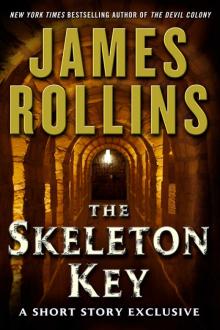 The Skeleton Key
The Skeleton Key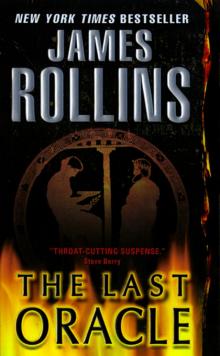 The Last Oracle
The Last Oracle The Judas Strain
The Judas Strain Black Order
Black Order Sandstorm
Sandstorm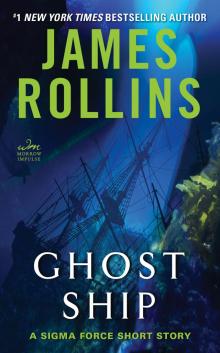 Ghost Ship
Ghost Ship The Devil Colony
The Devil Colony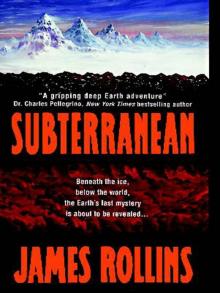 Subterranean
Subterranean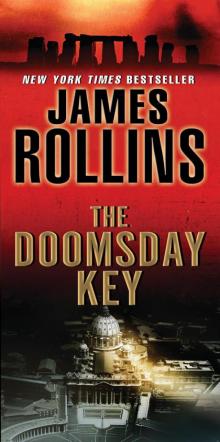 The Doomsday Key
The Doomsday Key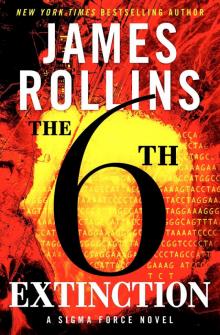 The 6th Extinction
The 6th Extinction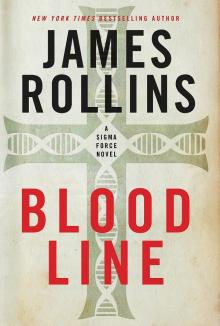 Bloodline
Bloodline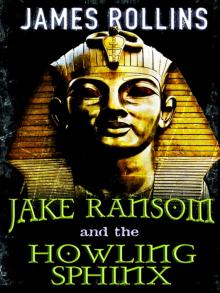 Jake Ransom and the Howling Sphinx
Jake Ransom and the Howling Sphinx The Midnight Watch
The Midnight Watch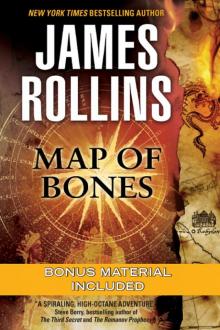 Map of Bones
Map of Bones The Demon Crown
The Demon Crown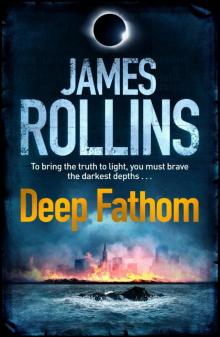 Deep Fathom
Deep Fathom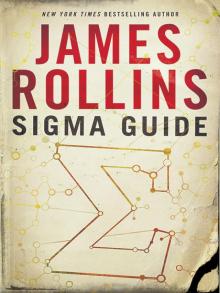 Sigma Guide
Sigma Guide Kowalski's in Love
Kowalski's in Love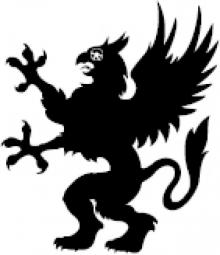 Jake Ransom and the Skull King's Shadow
Jake Ransom and the Skull King's Shadow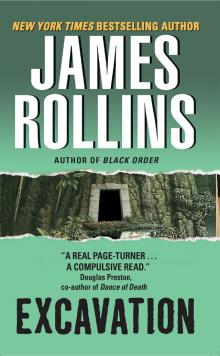 Excavation
Excavation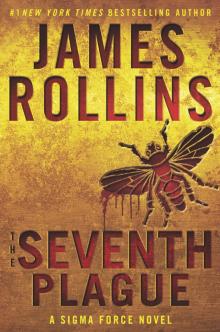 The Seventh Plague
The Seventh Plague Altar of Eden
Altar of Eden Unrestricted Access: New and Classic Short Fiction
Unrestricted Access: New and Classic Short Fiction Indiana Jones and the Kingdom of the Crystal Skull
Indiana Jones and the Kingdom of the Crystal Skull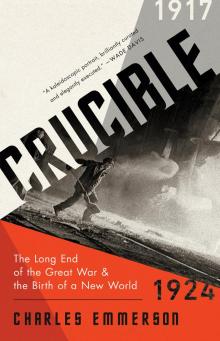 Crucible
Crucible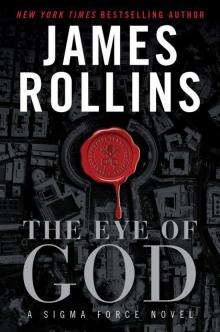 The Eye of God
The Eye of God The Bone Labyrinth
The Bone Labyrinth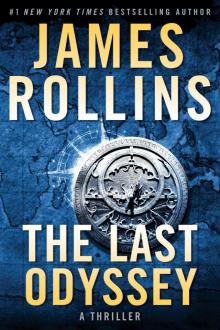 The Last Odyssey: A Thriller
The Last Odyssey: A Thriller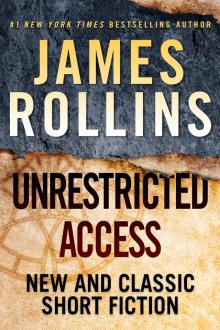 Unrestricted Access
Unrestricted Access Amazonia
Amazonia Blood Brothers: A Short Story Exclusive
Blood Brothers: A Short Story Exclusive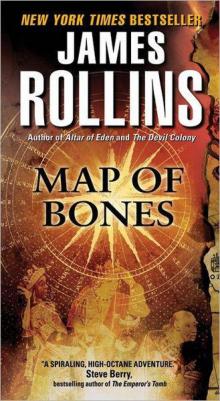 Map of Bones: A Sigma Force Novel
Map of Bones: A Sigma Force Novel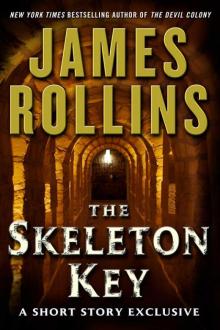 The Skeleton Key (sigma force)
The Skeleton Key (sigma force)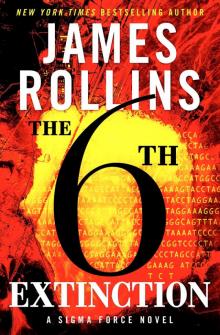 Sigma Force 10 - The Sixth Extinction
Sigma Force 10 - The Sixth Extinction Innocent Blood
Innocent Blood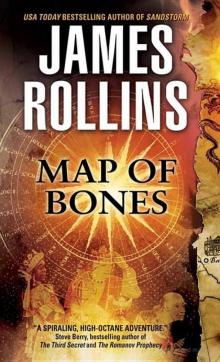 Map of Bones sf-2
Map of Bones sf-2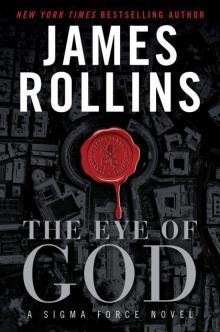 The Eye of God: A Sigma Force Novel
The Eye of God: A Sigma Force Novel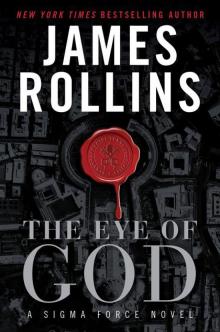 The Eye of God: A Sigma Force Novel sf-9
The Eye of God: A Sigma Force Novel sf-9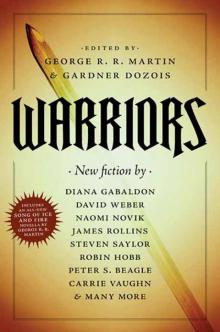 The Pit
The Pit Indiana Jones and the The Kingdom Of The Crystal Skull
Indiana Jones and the The Kingdom Of The Crystal Skull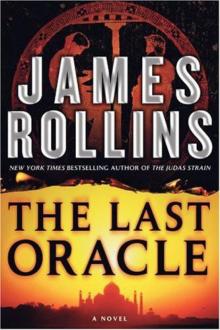 The Last Oracle (2008) sf-5
The Last Oracle (2008) sf-5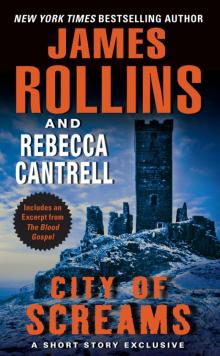 City of Screams
City of Screams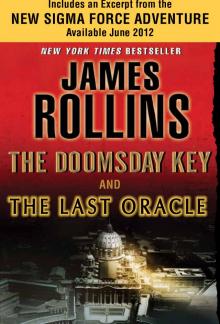 The Doomsday Key and The Last Oracle with Bonus Excerpts
The Doomsday Key and The Last Oracle with Bonus Excerpts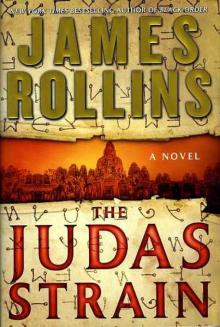 The Judas Strain sf-4
The Judas Strain sf-4 Blood Infernal
Blood Infernal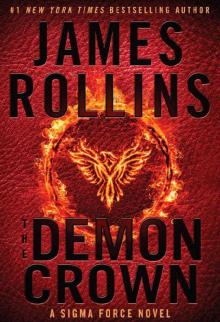 The Demon Crown: A Sigma Force Novel
The Demon Crown: A Sigma Force Novel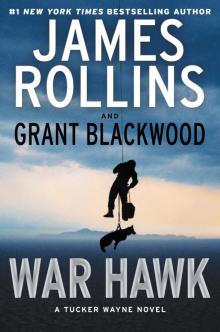 War Hawk: A Tucker Wayne Novel
War Hawk: A Tucker Wayne Novel SANDSTORM sf-1
SANDSTORM sf-1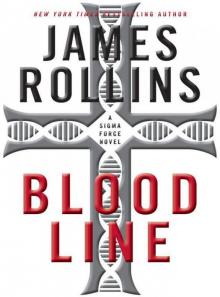 Bloodline: A Sigma Force Novel
Bloodline: A Sigma Force Novel Amazonia: a novel
Amazonia: a novel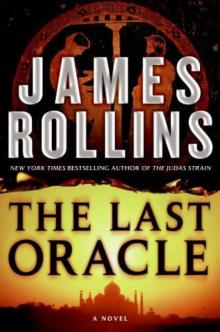 The Last Oracle: A Sigma Force Novel
The Last Oracle: A Sigma Force Novel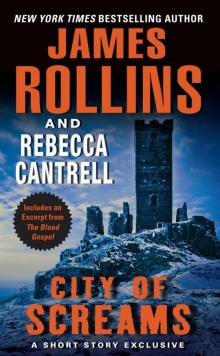 City of Screams (the order of the sanguines)
City of Screams (the order of the sanguines)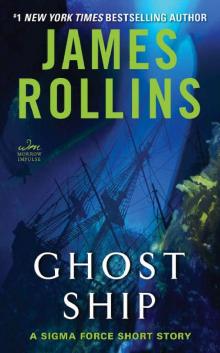 Ghost Ship: A Sigma Force Short Story
Ghost Ship: A Sigma Force Short Story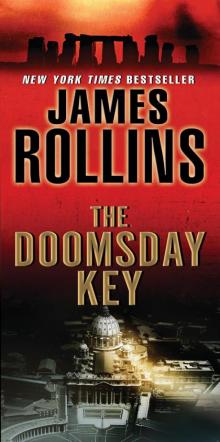 The Doomsday Key: A Sigma Force Novel
The Doomsday Key: A Sigma Force Novel